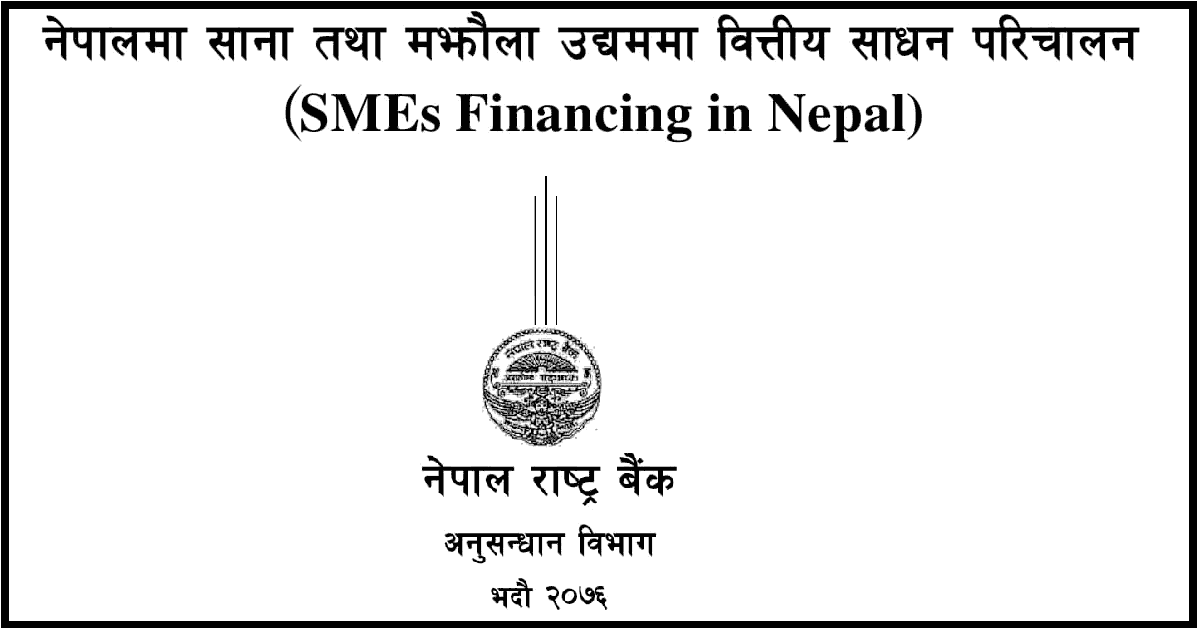
In many countries, small and medium enterprises (SMEs) are defined on the basis of job creation, annual turnover or fixed assets. SMEs have a significant contribution to job creation, gross domestic product, and promotion of exports. In emerging countries, SMEs are found to contribute up to 60 percent of total employment and 40 percent of domestic production. According to the Financial Sector Development Strategy, 2073/74-2077/78, small and medium enterprises in Nepal have contributed 22 percent of the total domestic product and created about 1.7 million jobs.
The Industrial Business Act, 2073 in Nepal has defined small and medium enterprises based on fixed capital. By the end of FY 2074/75, 2,75,433 small and medium enterprises have been registered.
SMEs promotion requires strengthening the SMEs Financing aspect. Generally, the main sources of financing of SMEs are found to be capital, banks and financial institutions, cooperatives, venture capital / private equity and capital markets.
Agencies such as the Government of Nepal, Department of Industry, Nepal Rastra Bank, Securities Board, Deposit and Debt Protection Fund will have an important role in the policy-making of SMEs Financing. Various funds, refinancing and loan securities, subsidized loans, and programs are being implemented to promote SMEs Financing in Nepal. Despite all this, the issue of SMEs failing to mobilize sufficient financial resources and, as a result, SMEs failing to contribute to the economy is discussed.
It is against this background that this study is conducted with the purpose of reviewing the current state of Financing SMEs in Nepal and analyzing the problems and possibilities associated with it. In this study, small and medium enterprises as defined by the Industrial Business Act, 2073 are considered as the target population. Both primary and secondary statistics are used in the study.
When analyzing the data obtained from the survey related to the study, SMEs started collecting most of the financial resources from sources other than the banking sector. The SMEs included in the study found that on average, 32 percent of their ancestral asset sources, 26 percent from their own savings, 16 percent from banks and financial institutions, and the rest from other sources, were found to be operating from time to time. It is found that about 50 percent of the SMEs in operation are borrowed from banks and financial institutions and 85 percent of them are receiving financial instruments through commercial banks.
The entrepreneurs have identified the need and procedural constraints of real estate collateral for obtaining loans from the banking sector, while the banks have been advised that there is not enough credit flow in SMEs due to lack of institutional capacity development and potential for loan misuse. Venture capital / private equity companies have not been developed enough to finance SMEs.




